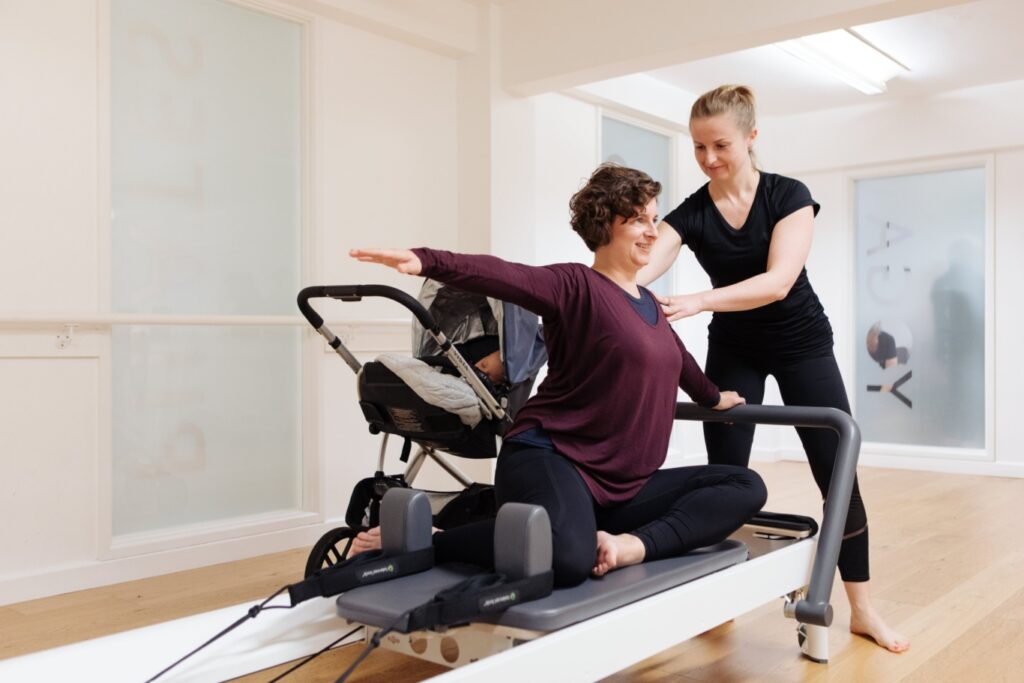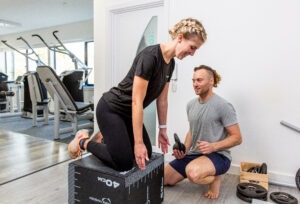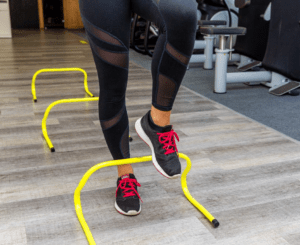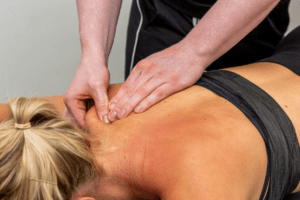Did you know that your post-partum recovery starts during pregnancy?
During pregnancy, a woman’s body goes through lots of hormonal and metabolic changes in order to provide the appropriate conditions for baby’s development. These changes may have more or less impact on the woman’s general health, causing conditions such as: back pain, sciatica, pelvic pain, pelvic floor issues, constipation, diabetes, insomnia…
It has been proved that regular Pilates practice during pregnancy can help relieve some of these symptoms. A proper assessment is a must before starting your Pilates classes and it will help the instructor to recognize any alarming symptoms and/or contraindications to ensure a safe and joyful practice for you and your baby.
The absolute contraindications to exercise will be determinated by your doctor or midwife.
Why Pilates?
Pilates is a low impact personalized method that adapts to your needs, increasing your general energy, improving your sleep and helping you regulate all the systems in the body, including vascular, pulmonary, immune, digestive and muscular-skeletal.
Pilates and pregnancy term by term
The first term is the most delicate one. The hormonal changes will be at the origin of tiredness, nausea, constipation and hypermobility of the joints. There’s also risk of miscarriage and therefore it is of course sensible to exercise caution. Many women decide not to exercise during this phase because they don’t want to. The most important thing is to feel safe and confident with what we’re doing and not to oblige the body to do something it doesn’t want to do. Trusting the Pilates instructor and letting her/him know about any concern is a must. The focus of the Pilates exercises during this phase will be the stability of the pelvis to prevent pelvic and other joints pains that may appear in the second term when the whole posture will start changing.
The second term is normally a relive as your energy levels are higher. We are therefore keen to move and exercise however the physical changes start to be evident. The belly volume will increase and may be at the origin of some digestive and vascular symptoms. The relaxin (a hormone that makes the ligaments more flexible) levels will increase and the pelvic area may feel more unstable which can lead to pain and symptoms. The focus of the Pilates exercises during this second term will be stabilizing the pelvic area and keeping mobility in key areas such as the spine and hips. It will assure that the core muscles keep their strength to support the belly, the spine and protect the pelvic floor from straining. On the same time, they will give them flexibility to let the belly grow avoiding the risk of abdominal diastasis (gap in the abdominal muscles). We will start working more specifically on the pelvic floor understanding how it works. It will be necessary to rise the head and shoulders slightly while lying on your back and avoid postures lying on your belly.
During the third term there’s an increase in the symptoms of the second term and possibly some new ones, such as cramps, edema, blood pressure, feeling more emotional, tiredness and carpal tunnel syndrome. The Pilates practice during the third term will have a major role on preparing the body for labor and facilitating a better and faster recovery in the post-partum. We will focus the practice on increasing the mobility of the pelvis and hips as well as controlling the pelvic floor. All these facts will make baby’s way out easier and will allow the future mum to be able to take different positions during labor.



